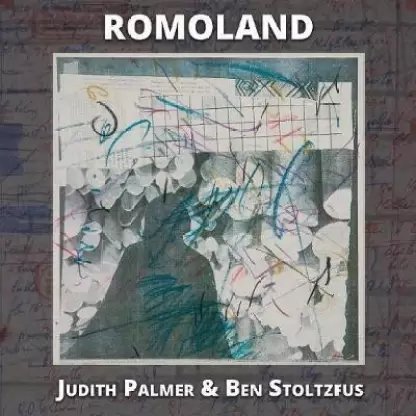
To be a human means having your voice. To be regarded as an equal means being able to speak your truth. But how many of us, particularly those on the margins of society, have been able to speak for themselves? Has everyone’s voice been recorded in history? Romoland is precisely about fighting for that space where one can speak their reality as an equal to everyone else. It is a quest for conquering the center and moving away from the margins.
Romoland: a pictonovel, is a collaborative work by the graphic artist Judith Palmer, and her husband, Professor Ben Stoltzfus. The book with artworks by Palmer and the texts by Stoltzfus is not just a powerful interplay of two media. It also brings into the picture the postmodern ideas on gender, meaning, reality, language, and so on. The novel depicts the conflict between two characters, a chauvinist husband and a feminist wife. It has twenty-five artworks. Each artwork is followed by a conversation between them. The dialogues are free-flowing and explore the deeper philosophical differences between both of them. The question of patriarchy keeps coming throughout the text. The novel also explores the possibility of finding a common ground of understanding between them.
Romoland is a utopia, a dreamland for all those who have been excluded and marginalized throughout history. It is a land for women, the displaced, and the dispossessed. In this sense, it reminds us of the Utopia land created by Indian philosophers such as Ravidas’s Begumpura or Kabir’s Premnagar. All these utopias, like Romoland, symbolize a refugee for the people at the margins. Throughout the book, one can find the quest by the wife to claim her space as a woman in a man’s world. She desperately seeks a sense of identity, existence, and belongingness. She is full of promise in her struggles but is also exhausted and frustrated at the oppressive system.
The book is a staunch critique of patriarchy. It shows how from history to language to art, patriarchy prioritizes men and their opinions. It is characterized as oppressive and contradictory. The husband is indifferent to the privileges he has because of his gender. He is dismissive of his wife’s art and assumes an unquestioned authority to validate her paintings. Patriarchy has given him the unfair privilege to decide what counts as an art and what meaning should an art convey. The wife, for most of her life, struggles to break through his judgment on her art. In this way, the book also points to the liberating and revolutionary potential of the creative process. By the end of it, the wife becomes completely confident of her work and the meaning it carries. She breaks free of the need to get validation from her husband.
The role of patriarchy in the making and recording of history is beautifully shown. The history has been written by men and for men. The struggles and achievements of women have never found their rightful place in “his-story”. In this way, history becomes a tool for the husband to dismiss his wife’s work. In history and mythology, women have been shown as deceitful and cunning. It becomes an excuse for men to subordinate women. In social and political affairs, women have been systematically excluded. The novel cites this as the very reason why the husband favors continuity over change.
The novel through its interplay of graphics and texts talks about the meanings attached to different art forms. The sharp and definitive lines drawn by the husband point at his desire for rigidity and certainty. The certainty helps him command control over the world, including his wife. The wife, on the other hand, prefers fuzzy edges and circles in her paintings. It points to her admiration of uncertainty, freedom, and newness. She does not shy away from experimenting. She freely and cleverly uses the style of her husband, modifies it, and creates art with new meanings. This indicates the limited tools the marginalized have at their disposal to express themselves. They thus have to be judicious and creative.
The novel juggles philosophical ideas such as certainty and uncertainty, culture and nature, objectivity and subjectivity, reason and body, and man and woman. It critiques the system of binary opposites and how one set of the binary always dominates the other. The prioritizing of reason over body and masculine over feminine form crucial elements of patriarchy. Through the exchanges between the protagonists, the novel suggests the need to break free of the binary system for an equal world.
The fuzziness of the graphics made by Palmer shows the uncertainty and grayness of the real world. The dialogues tell us that there is no singular and objective truth. The meanings we give to the world and the realities of our lives depend on our lived experiences. The meaning of art differs greatly from the perspective of the wife to that of the husband. Even their purpose of creating art is different. Their respective genders play a great role in their different perspectives. In a patriarchal world, order for men could mean disorder for women.
The novel is an intriguing attempt at looking at the multiplicities of worlds that exist like pieces of a jigsaw puzzle. It reminds the reader of breaking the binaries. It promises an insightful yet playful ride where conflicts and differences are dealt with to find a mutually beneficial ground for everyone.
This book available on Amazon and Barnes and Noble
LAST UPDATED: 12TH MARCH, 2024
